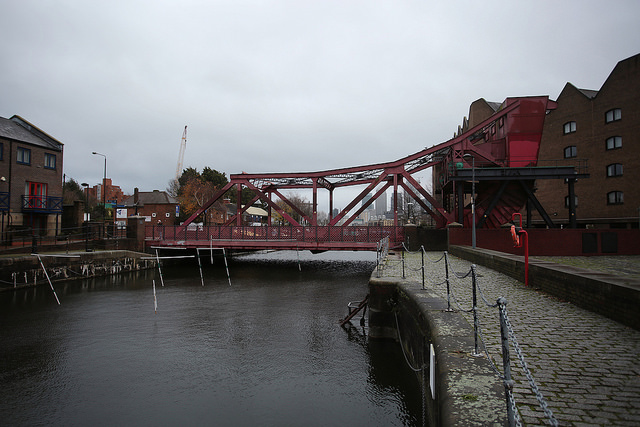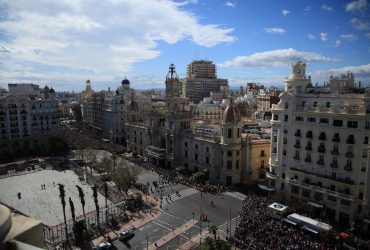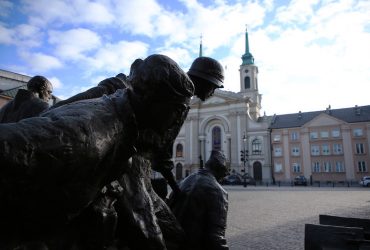London hides many stories among its streets, parks and old pubs. Often it is enough to walk through its streets and look around to discover the strangest and most peculiar. The more I go back there, the more I realise how much I have yet to see, explore and learn: today I want to take you to discover 6 places in London with a history a little bit particular or unusual.
Horse at water
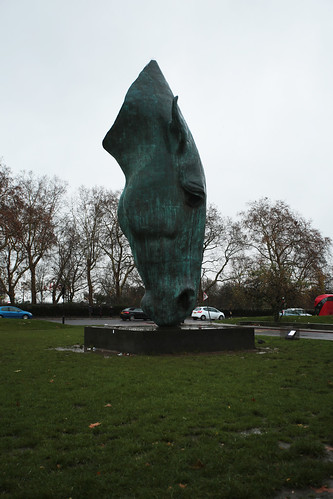 This horse-shaped statue is located at the northeast corner of Hyde Park, not far from the Speaker’s corner. At one time, the area was called Tyburn: its name was used for centuries, in literature, about the gallows that was located in this village (yes, village) intended for the execution of prisoners. Since 2010, placed between a 1960s fountain and the famous marble arch by John Nash, a bronze sculpture in the shape of a horse head by the sculptor Nic Fiddian-Green has been placed here. 10 meters high, weighing 17 tons, this huge horse head is inquisitive and particular, for its shape, its position “poised on the nose” and for the past history of the area. I admit that I was stunned, maybe even a little ‘disconcerted, for the first seconds spent looking at it once out of the metro: I approached, I did a couple of laps around, and only later I started to find it slightly less “strange” compared to the first impression. Some historical notes about the area: Tyburn was, in the old days, a village and not a district of London. Here were the public executions of prisoners from Newgate Prison in the City, who came through St Giles in the Fields and Oxford Street. The first performance was that of William Fitz Osbern, the chief of the poor in London, arrested in the church of St Mary-le-Bow, dragged naked from a horse to Tyburn where he was hanged. Among the most authoritative individuals attached here were Judge John Bradshaw, General Henry Ireton and Oliver Cromwell. The word Tyburn, at some point in history, became a euphemism used to indicate capital punishment: for example, the expression “riding a ride to Tyburn” meant ending up hanging. The last hanging, of the brigand John Austin, took place on November 3, 1783.
This horse-shaped statue is located at the northeast corner of Hyde Park, not far from the Speaker’s corner. At one time, the area was called Tyburn: its name was used for centuries, in literature, about the gallows that was located in this village (yes, village) intended for the execution of prisoners. Since 2010, placed between a 1960s fountain and the famous marble arch by John Nash, a bronze sculpture in the shape of a horse head by the sculptor Nic Fiddian-Green has been placed here. 10 meters high, weighing 17 tons, this huge horse head is inquisitive and particular, for its shape, its position “poised on the nose” and for the past history of the area. I admit that I was stunned, maybe even a little ‘disconcerted, for the first seconds spent looking at it once out of the metro: I approached, I did a couple of laps around, and only later I started to find it slightly less “strange” compared to the first impression. Some historical notes about the area: Tyburn was, in the old days, a village and not a district of London. Here were the public executions of prisoners from Newgate Prison in the City, who came through St Giles in the Fields and Oxford Street. The first performance was that of William Fitz Osbern, the chief of the poor in London, arrested in the church of St Mary-le-Bow, dragged naked from a horse to Tyburn where he was hanged. Among the most authoritative individuals attached here were Judge John Bradshaw, General Henry Ireton and Oliver Cromwell. The word Tyburn, at some point in history, became a euphemism used to indicate capital punishment: for example, the expression “riding a ride to Tyburn” meant ending up hanging. The last hanging, of the brigand John Austin, took place on November 3, 1783.
Today, the place of the gallows is today marked by three brass triangles, mounted on a traffic island at the intersection of Edgware Road with Bayswater Road. It is also commemorated by the Convent of Tyburn, a Catholic convent dedicated to the memory of the martyrs executed there and in other places because of their faith.
Brunswick’s plane tree
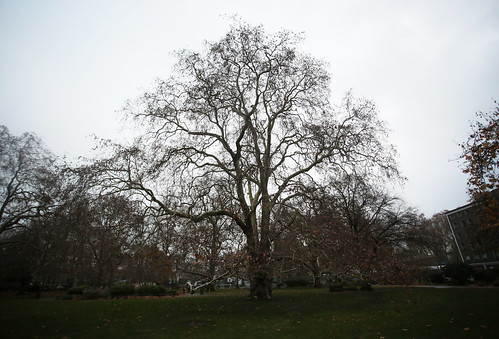 The plane tree is a popular tree in London: in particular, the typical species of the city is the “Platanus x acerifolia”, a cross between Western and Western Platano. In Brunswick Square, in the district of Bloomsbury, is the Platano di Brunswick, a magnificent example of this species crossing. The trunk of this tree has a diameter of 7 meters, and the lower branches have never been cut: at the centre of this small “urban garden”, therefore, the tree has grown according to its natural form, and its lower branches are they widen to human height.
The plane tree is a popular tree in London: in particular, the typical species of the city is the “Platanus x acerifolia”, a cross between Western and Western Platano. In Brunswick Square, in the district of Bloomsbury, is the Platano di Brunswick, a magnificent example of this species crossing. The trunk of this tree has a diameter of 7 meters, and the lower branches have never been cut: at the centre of this small “urban garden”, therefore, the tree has grown according to its natural form, and its lower branches are they widen to human height.
Kindertrasport monument
 This is a group of bronze statues representing a group of children of different ages, located in front of the south entrance of Liverpool Street station. Behind the group of children is a track, along which are shown their cities of origin. Between December 1938 and September 1939, about 10,000 Jewish children arrived at the Liverpool Street station: after the attacks on German Jews and their synagogues occurred the night between November 9th and 10th, 1938 (the “night of the crystals” “), British governor allowed the immigration of Jewish children under 17 and looked for adoptive families or benefactors willing to donate 50 pounds for the trip. Among these boys “adopted” from Great Britain there was also Frank Weisler: to him, we owe the memorial monuments of London, Hoek van Holland, Gdansk and Berlin.
This is a group of bronze statues representing a group of children of different ages, located in front of the south entrance of Liverpool Street station. Behind the group of children is a track, along which are shown their cities of origin. Between December 1938 and September 1939, about 10,000 Jewish children arrived at the Liverpool Street station: after the attacks on German Jews and their synagogues occurred the night between November 9th and 10th, 1938 (the “night of the crystals” “), British governor allowed the immigration of Jewish children under 17 and looked for adoptive families or benefactors willing to donate 50 pounds for the trip. Among these boys “adopted” from Great Britain there was also Frank Weisler: to him, we owe the memorial monuments of London, Hoek van Holland, Gdansk and Berlin.
Shad Thames
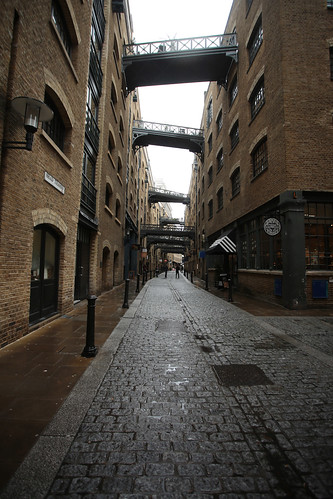 This area of London is situated along the south bank of the Thames, east of Tower Bridge. Charles Dickens knew her very well because he used to come with the city’s river police: right here he set some scenes of books like Oliver Twist, and it was the area of the poor suburbs of the town. Shad Thames is the road that runs along the river to St. Savior’s Dock, where those that were warehouses and warehouses have now been converted into luxury homes and offices. Three years after the death of Dickens, to be precise in 1873, there were built deposits of tea, coffee, spices and wheat, while the reconversion to homes and offices began in the 80s of the twentieth century (the last warehouse was closed in 1972). The walkways between the buildings, built initially as links between the various warehouses on both sides of the street, today are the balconies of the apartments. I must admit that early Saturday morning, perhaps because of the city that still has to awaken completely, the almost deserted area shows an extraordinary atmosphere (and you can try to imagine why Dickens chose it for his books).
This area of London is situated along the south bank of the Thames, east of Tower Bridge. Charles Dickens knew her very well because he used to come with the city’s river police: right here he set some scenes of books like Oliver Twist, and it was the area of the poor suburbs of the town. Shad Thames is the road that runs along the river to St. Savior’s Dock, where those that were warehouses and warehouses have now been converted into luxury homes and offices. Three years after the death of Dickens, to be precise in 1873, there were built deposits of tea, coffee, spices and wheat, while the reconversion to homes and offices began in the 80s of the twentieth century (the last warehouse was closed in 1972). The walkways between the buildings, built initially as links between the various warehouses on both sides of the street, today are the balconies of the apartments. I must admit that early Saturday morning, perhaps because of the city that still has to awaken completely, the almost deserted area shows an extraordinary atmosphere (and you can try to imagine why Dickens chose it for his books).
Prospect of Whitby
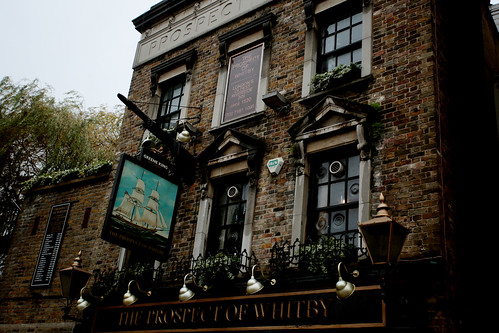 The history of this pub, one of the oldest in London, hides some curiosity. A part of its windows overlooks the river, and you can also see a small fork with a noose. The gallows is not the original one, but it still refers to a curious story: right here, in the past centuries, the condemned (brought here with a cart), their last Ale (a quarter of a gallon of beer) was granted before they were brought to the gallows to be hanged. The last sentence here executed dates back to 1830.
The history of this pub, one of the oldest in London, hides some curiosity. A part of its windows overlooks the river, and you can also see a small fork with a noose. The gallows is not the original one, but it still refers to a curious story: right here, in the past centuries, the condemned (brought here with a cart), their last Ale (a quarter of a gallon of beer) was granted before they were brought to the gallows to be hanged. The last sentence here executed dates back to 1830.
Shadwell Basin
 This basin was built in an enclosed area of 12 hectares as an eastern section of the London Dock, for the loading and unloading of ships. Today, however, it is a calm area where fishermen, yachtsmen and canoe enthusiasts come for leisure. Along the banks also curious and dogs walk with their owners. Today, this area of London is connected to the Thames to the east by a conduit and is surrounded by four (maximum five) floors dating back to the ’80s and recalling the style of the port warehouses of the past. Some canals connect it to Tobacco Dock (the tobacco stores of about 1812), and on Wapping Wall there is still the hydraulic system used since 1890 to operate the cranes, close the gates and the two bridges that, even today, block the port’s income. To get here, you have to take the DLR and get off at Shadwell.
This basin was built in an enclosed area of 12 hectares as an eastern section of the London Dock, for the loading and unloading of ships. Today, however, it is a calm area where fishermen, yachtsmen and canoe enthusiasts come for leisure. Along the banks also curious and dogs walk with their owners. Today, this area of London is connected to the Thames to the east by a conduit and is surrounded by four (maximum five) floors dating back to the ’80s and recalling the style of the port warehouses of the past. Some canals connect it to Tobacco Dock (the tobacco stores of about 1812), and on Wapping Wall there is still the hydraulic system used since 1890 to operate the cranes, close the gates and the two bridges that, even today, block the port’s income. To get here, you have to take the DLR and get off at Shadwell.

